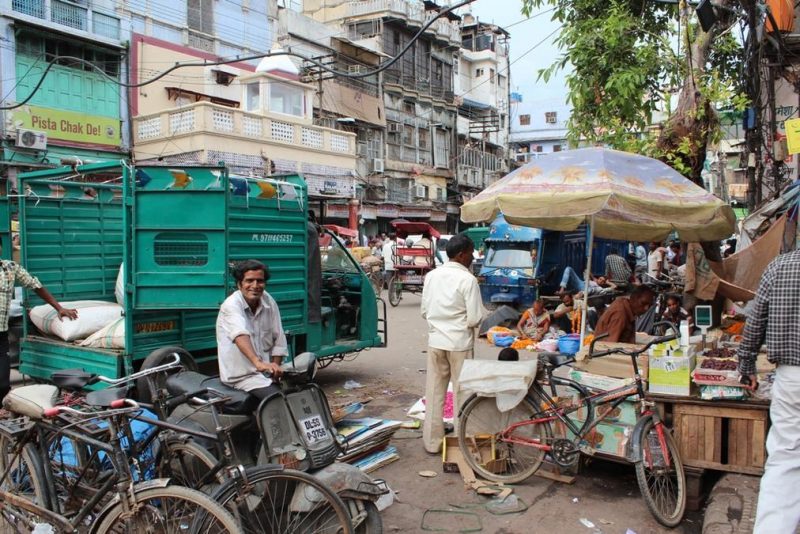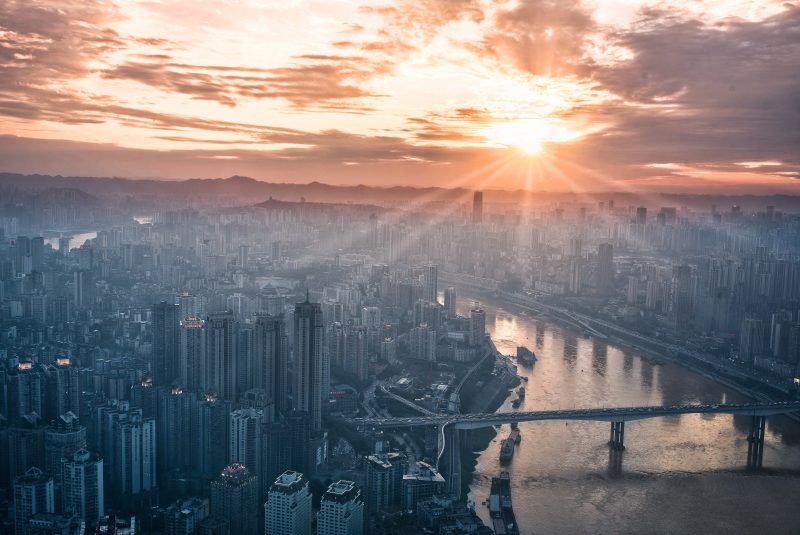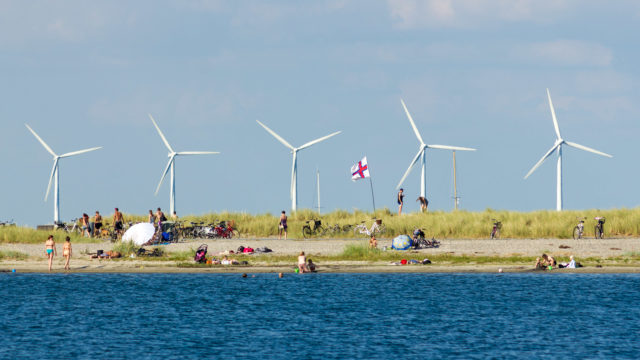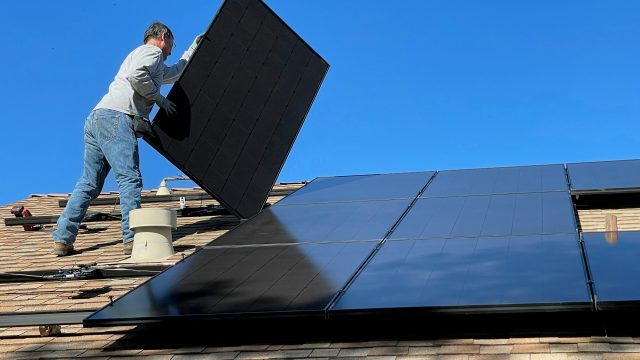Green Economy and COVID-19: the policies
Part 2 of our deep dive into how the Green Economy Tracker can help governments and citizens navigate the post-COVID recovery

COVID-19 has shown that it is more important than ever to think systemically about global problems. It has shown the value of acting early and decisively. It has reminded us of the paramount importance of thinking about our economies as we respond to problems that might not seem to be economic ones – at least at first pass. These lessons are crucial for thinking about what policies are most important for greening our economies and responding to environmental breakdown.
Part 1 of this article introduced what green economy issues are at stake in the recovery from COVID. It introduced the scarce resources of time, state capacity, and debt, and provided a three phase frame to map out the policy response to crisis. An initial stabilization phase to support the economy, a stimulus phase where spending is needed to jump-start economic activity once it is safe, and a new normal recovery phase where sustainable economic activity is entrenched. Lastly, it introduced a tool - the Green Economy Tracker - which describes a policy suite for thinking about what a green economy means, and to help civil society track national progress.
Part 2 will focus on the policies that matter for a green recovery from COVID-19, and look at which policies in the Tracker are deserving of most attention during each phase.
Stabilization
During the first part of the crisis, it is most important that the economy is stabilized and supported while governments and key workers focus on the immediate health challenge of preventing spread of the virus. Inclusive Governance policies are an important marker here as - due to the importance of rapid action - governments may push through policies without consultation or due process, and businesses may not consider the impact of sudden lockdowns on their staff. Countries with strong norms of consultation and gender inclusion in governance will be more equipped to develop flexible policies which respond to new care and employment challenges that arise.
Especially important for the immediate response is the provision of Small Business Support to previously viable businesses who can no longer operate, or see dramatically reduced demand for their services. Understanding the micro, small, medium enterprise (MSME) sector has proved essential for governments’ ability to quickly provide loans and grants to businesses that face COVID cashflow crises. Clear legal definitions for small businesses and social purpose enterprises - who are also often positioned to have most impact in their communities - can provide the administrative superstructure to channel effective support to those that need it most.
“ Governments will want to invest - and enable investment - in an economy that will still be standing, not stranded, in a decades’ time.”
The most visible new policy measure in many countries has been wide use of Innovative Social Protection in the form of expanded social insurance, basic income/grants and furlough schemes. These schemes all aim to provide additional public support to people unable to receive their usual income, be it due to lockdown, caring responsibilities, or unemployment. These safety nets are not only essential macroeconomic stabilization policies, but can also help people transition employment from brown to green industries.
During initial stabilization, it is possible that ambition for Green Fiscal and Monetary Policy may be lowered due to perceived prioritization and spending on COVID support, and demand for Safe and Accountable Banks reduced in favor of immediate lending support. Similarly, emphasis on Green Jobs schemes, Pro-Poor Policy, and Participatory Policymaking may be limited by a desire not to hamstring rapid response policies. Speed is of course important in the stabilization phase, and conditionality can be sensibly limited to environmental and social ‘do no significant harm’ (DNSH) principles. As we will see, stronger alignment is possible in the coming stimulus and recovery phases.
Stimulus
As economies begin to open up there can be a renewed focus on green stimulus to help them get back on track faster – investing in new businesses and launching green economic activity to replace jobs and opportunities that have shuttered permanently.
Here fiscal stimulus and government spending can hit the economy and create jobs quickly, making it more important than marginal, medium term monetary actions by central banks. National Green Economy Plans are ideal sources of shovel-ready infrastructure ideas which offer positive social rates of return on investment, and are often employment-intensive in the short run.
Immediate Green Jobs can be created directly and in supply chains by investing in extensive retrofitting of buildings to improve energy efficiency and provide clean heating, upscale installation of domestic and utility-scale renewable energy generation, installing new street-level infrastructure for electric vehicles, and massive ecosystem restoration and landscape management initiatives. Ambitious Clean Energy Policy and Nature-based Fiscal Reform are good places to start for job rich stimulus.

There is direct interaction here with Green Fiscal and Monetary Policy which is needed to support and enable planned productive investments. Unlike in the stabilization phase, it is important to take time to consider green conditionality for stimulus and lending packages. While stabilization policy might follow the reasonable flexibility of DNSH to green ambition, stimulus can be conditional on active forward progress in the contributing to the green economy. Careful gearing of stimulus policies and their medium-term impact on the economy should be weighed above the unconditional accessibility that should prevail during the initial emergency.
Monitoring Green Sectoral Policy Plans will be key here. What are the details of sectoral transitions in different sectors and how can those hit hardest by COVID-19 be guided in new directions? Governments will want to invest - and enable investment - in economic activity that is part of a broader vision of a green economy; an economy that will still be standing, not stranded, in a decades’ time. For example, it may be counterproductive to bailout to airlines that are not serious about moving to a business model that is lower-carbon (via hybrid flight, R&D or extensive offsets) and helps their customers lower emissions. Better to let clearly brown businesses fail and focus attention and job creation elsewhere, than send good money after bad.
Though the urgency is lessened, there are still risks in the stimulus phase that short-termist policy will miss opportunities for alignment with a greener, inclusive economic mission. It is worth paying attention to whether green stimulus meets the aims of Pro-Poor Policy – intervening in areas where there are economic, social and environmental gains to be made, and ensuring a just transition.
“ Economists hope for a recovery that is much quicker than the glacial, scarred recovery of post-2008. The difference this time is that a return to normal isn’t good enough”
On the monetary side, the importance of Safe and Accountable Banks could be undermined by the priority of getting funds out the door. Transparency should remain paramount, and regulatory pressure must be stepped up on banks who don’t adequately consider climate and environmental risks in the wave of lending or easing of credit access. Systemic financial risks are likely to be very real during the fragile stimulus phase.
New Normal
Economists hope that following the initial shock and deployment of effective stimulus, our economies will be able to normal trend rates economic growth, job creation and innovation. If not a rapid ‘V-shaped’ recovery, then at least one which is much quicker than the glacial, scarred recovery of post-2008.
The difference this time is that a return to normal isn’t good enough. As is widely recognized, the longer-term recovery from COVID offers a real chance to build back better - greener - and establish a new normal for what a sustainable economy can look like. A vision that achieves the SDGs, protects nature, and delivers the net-zero carbon economies that our climate requires.
As with the stabilization and stimulus phases before, different policy approaches and guideposts are needed for this new normal. More ambition is possible now that the immediate health and economic crises have eased, and National Green Economy Plans remain important tools to coordinate a suite of approaches and set robust targets – now with an eye to longer-time horizons than immediate job creation and shovel-ready initiatives. The SDGs are an excellent guide for national goals on this timeframe, and an SDG Business Strategy that can align private sector activities with green economy objectives will become essential.
The economic new normal will need to broaden the national visions of economic success and embrace new beyond-GDP metrics such as Wealth Accounting. Wealth accounts and indicator dashboards can help identify trade-offs and synergies, creating a more integrated view of economic decision-making. Policymakers will then be empowered to make stronger investment in natural systems and social institutions as valued economic assets, as well as their essential cultural and biophysical roles. Carbon accounting should play a central role in driving economies to be climate ready, with rules for Pricing Carbon and legislation for binding Carbon Budgets providing the framework. Policymakers need both carrots and sticks in their toolbox, and these sticks provide the impetus to force carbon intensive businesses to shape up, innovate or go out of business.
Under the new normal, ambitious Green Finance Plans and Green Sectoral Policy Plans will be needed to uphold the success of broader national green strategy. Rather than focus on COVID support or economically vulnerable sectors, plans can return to embedding incentives for green investment via a clear taxonomy for green financial products, or focusing investment on transitioning the highest impact sectors of the economy – such as transport, buildings, or energy.
Innovative Social Protection is one area of policy where the main question is how much policy ambition will be retained, rather than added. Many citizens will have experienced new kinds of social protection during COVID; be it expansion of pooled unemployment or health insurance in the global south, or more elaborate job support or basic income support schemes in the global north. These innovations will have brought governments new administrative expertise as well as new bureaucracy, much of which will be needed to support workers out of a rapid, just transition out of an outdated economic model – just as it helped workers through COVID.
Citizens of countries that have coped well during the crisis will be more aware of what good social protection institutions can do, while simultaneously those who have suffered most will be well aware of the precarity of their economic situation. Governments will need to be flexible and progressive if they are not to be caught off-guard by more demanding voters who are now aware of the scope of what is possible.
One policy area that needs strengthening if we are to seize the opportunity of a new normal is conservation of nature. Discussions about human encouragement on nature and increased risks from zoonotic diseases have remerged in light of COVID, and debates will continue to rage as more details about the origin of the crisis emerge. Governments will need to set out a new paradigm for Ocean & Land Conservation that recognizes old approaches have clearly failed both people and natural ecosystems. The SDGs offer the broadest global framework for aligning policy, especially under Goals 14 (Life Below Water) and 15 (Life on Land). But the rehabilitation of the Convention on Biological Diversity (CBD) and the success of the COVID-delayed CBD COP 15 in China offer a real opportunity to put our relationship with nature on a new, sustainable footing.

One decision-making tool that can help create a new dynamic with nature is the creation of Natural Capital Accounts, which take stock of a countries natural resources as valuable economic assets. Nature is much, much more than a resource to draw upon, but ignoring the essential economic value to societies of healthy ecosystems is one reason why they have been plundered by short-sighted public and private actors. We are increasingly seeing ecosystem accounts for water, for forests and other natural systems, but few countries have successfully mainstreamed this information into national planning and policymaking processes. Part of the new normal for linking nature and the economy can be creation of governance structures - like an independent Natural Capital Committee – which can better manage natural capital collectively, and provide a check against poor decision making.
Tracking Progress
The policies discussed above cover a broad conceptual terrain, but there will be much else besides for us to think about in guiding how we build a greener economy out of the COVID crisis. Responsive national and international institutions, and the ability to implement policy commitments, matter even more than usual – and certainly more than paper targets and policies. Developing and emerging economies need the support of smart INGOs and development finance institutions who recognize that the crisis is genuinely an opportunity to invest in a sustainable economic paradigm – one that is green, prosperous, and popular with the next generation of leaders, workers and voters.
At the GEC, we look to ground all our policy assessments with communities at the grassroots level. This is built into the crowd-sourced methodology of the Green Economy Tracker, and something that governments will need to bear in mind going forward from COVID. The policies that matter aren’t set in stone – even if the need for a building back better and creating a new normal is.
- Chris Hopkins, Green Economy Coalition


